Several of our housing projects are characterized by a close connection to nature. When developing these, much like when building in cultural heritage environments, we follow three guiding principles: Preserve, Make Accessible, and Contribute.
We aim to preserve as much of the surrounding nature as possible, while also making it accessible and adding something new through thoughtful development. Below are some concrete examples of how we apply these principles in our projects.
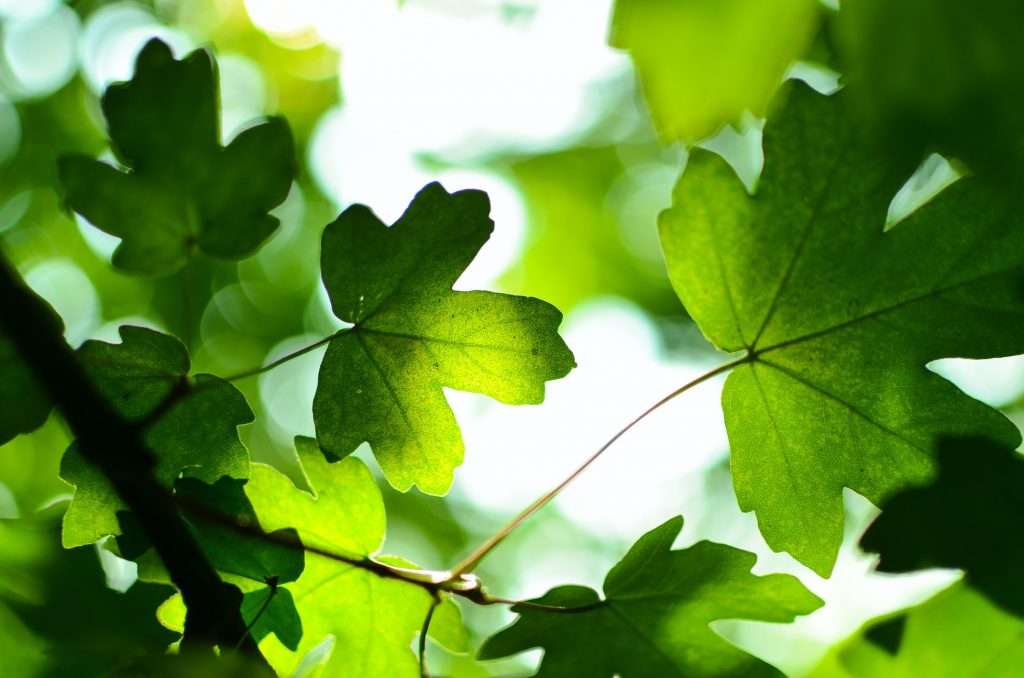
Examples from Our Projects
PRESERVE
The guiding principle Preserve is about placing and designing new buildings with consideration for natural values and existing wildlife. By preserving nature as much as possible and integrating the development into the environment, habitats can be maintained, which among other things facilitates the movement of species between different areas.
Skogskvarteren, Ullna Strand
Architect Thomas Sandell’s core idea in designing Skogskvarteren at Ullna Strand (Täby) was to start from the site’s natural conditions. The clean Scandinavian architecture follows the natural elevation changes, and forest has been preserved in a wide corridor between the rows of houses. The result is twofold: an appealing residential area and untouched nature, side by side.
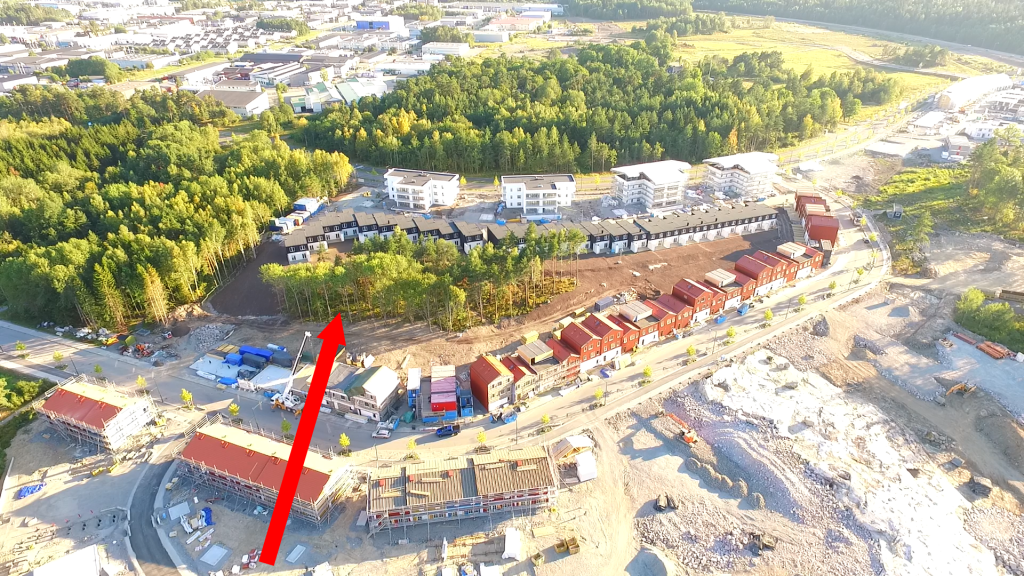
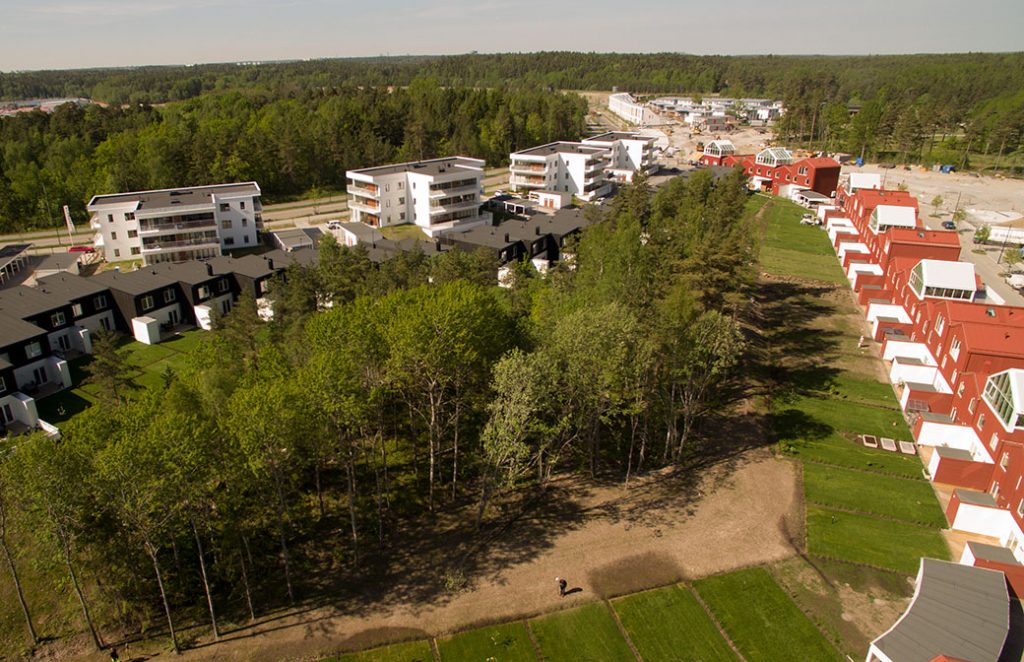
If you want to read more about the Skogskvarteren project, click here.
MAKE ACCESSIBLE
The guiding principle Make Accessible is about gently opening up the surrounding nature in the areas we develop. Often, it involves small interventions, such as giving people access to a swimming spot or a meadow where children and dogs can play, but it must be done thoughtfully and carefully. Otherwise, the result can easily be poor, and the damage difficult to repair.
Hallunda Gårdspark, Botkyrka
Since the Bronze Age, Hallunda Gård has been an important settlement for both humans and animals. Making the site accessible must be done with the utmost care. In this project, a network of walking paths is created to open up the surrounding nature. Existing movement patterns are incorporated, and the street structure channels flow into the park environment. Three important and well-established paths already run through the area; these are preserved and complemented with new walkways. Together with the new residential environments, these paths create a safe and accessible recreational landscape.
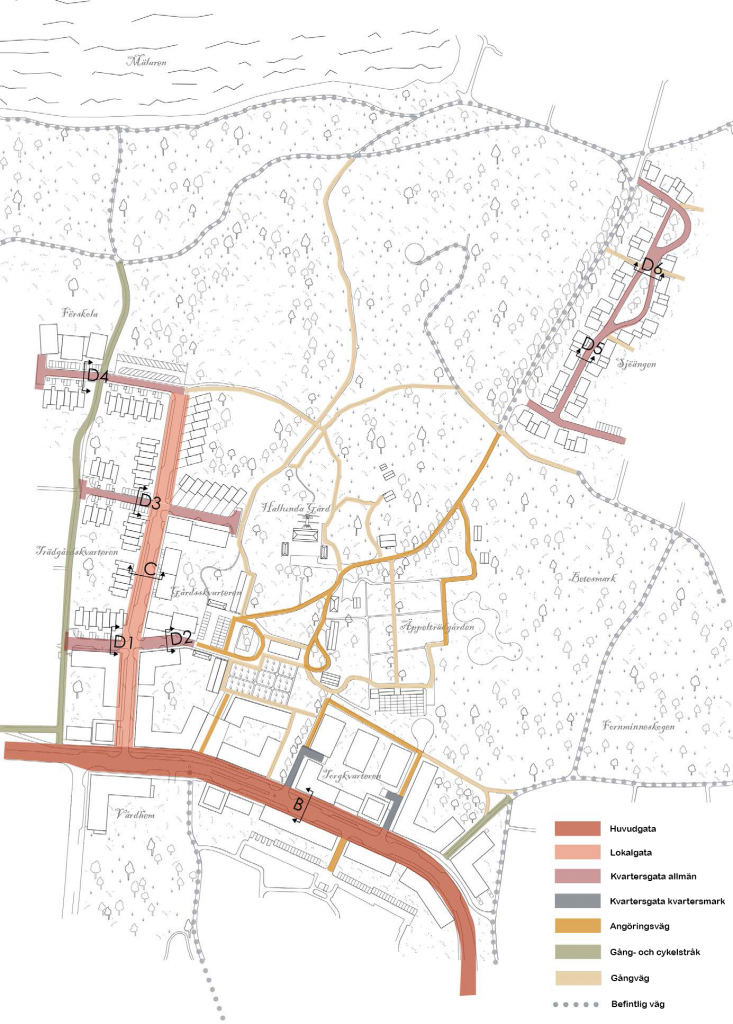
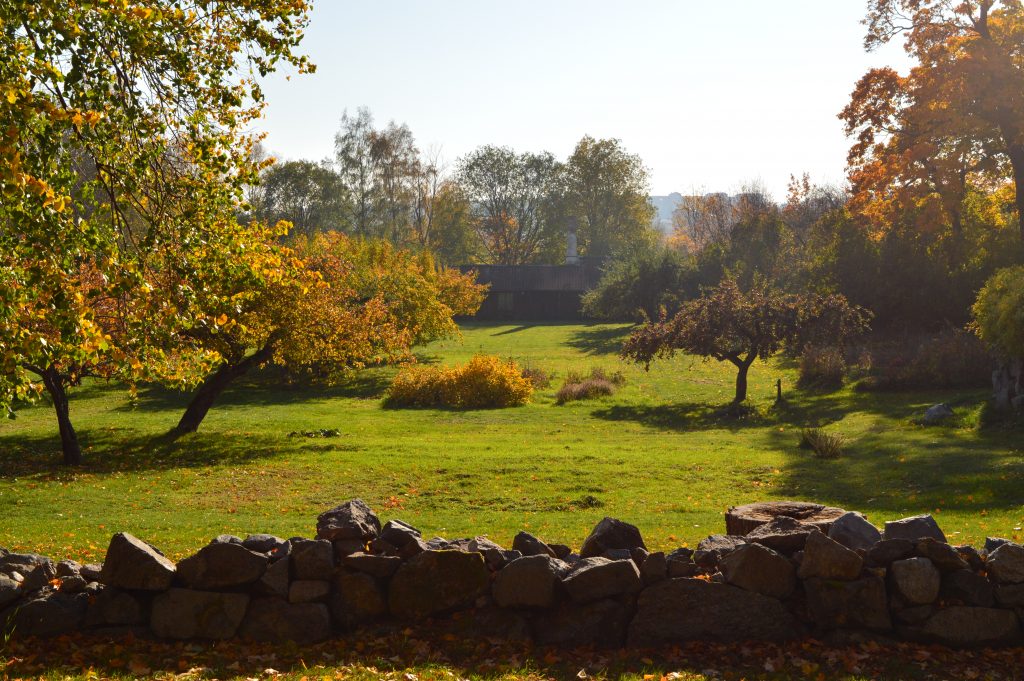
If you want to read more about the Hallunda Gårdspark project, click here.
CONTRIBUTE
The guiding principle Contribute is about adding value to the surrounding nature, enriching the site through thoughtful solutions and choices.
Kristineberg, Vallentuna
In the Kristineberg project in Vallentuna, the houses feature so-called sedum roofs (also known as “green roofs”) and the Savaq rainwater system. Sedum roofs are covered with living plants and offer many environmental benefits: they absorb and bind air pollutants, insulate the building to maintain a more stable indoor temperature, and help reduce noise, among other things. Savaq represents the new generation of systems for managing and delaying rainwater runoff. You can read more about Savaq here. Insect hotels are also placed throughout the area to provide habitats for pollinators and promote biodiversity.
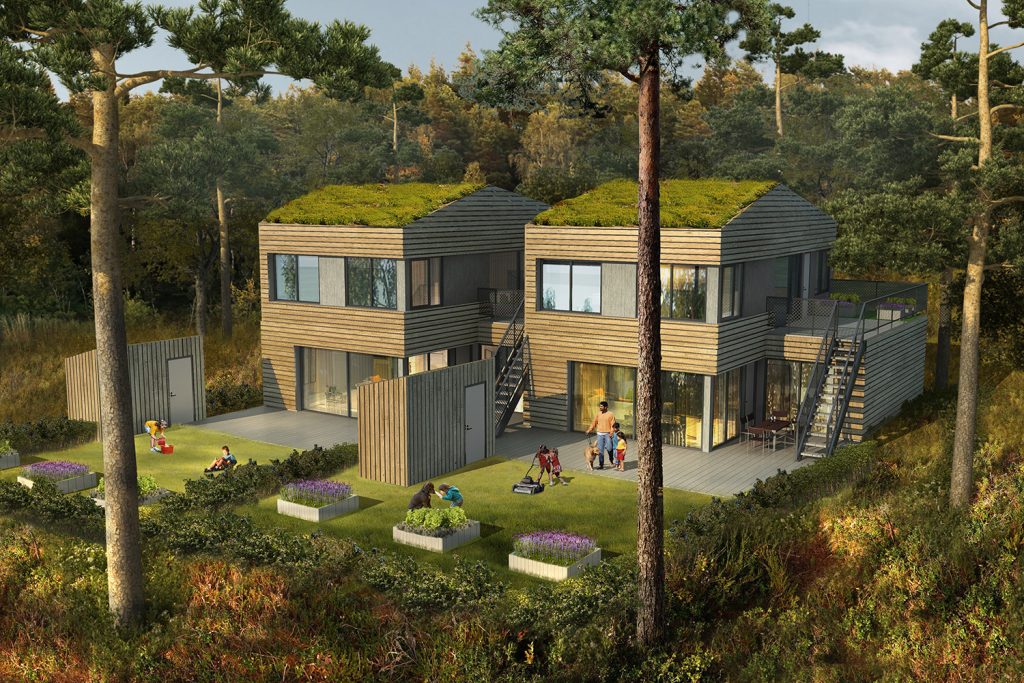
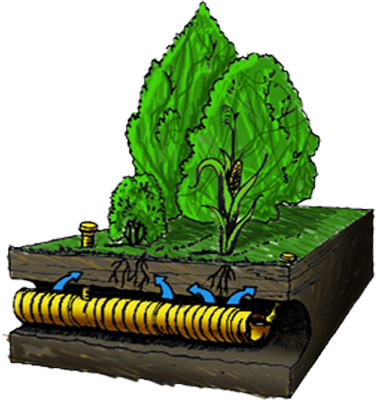
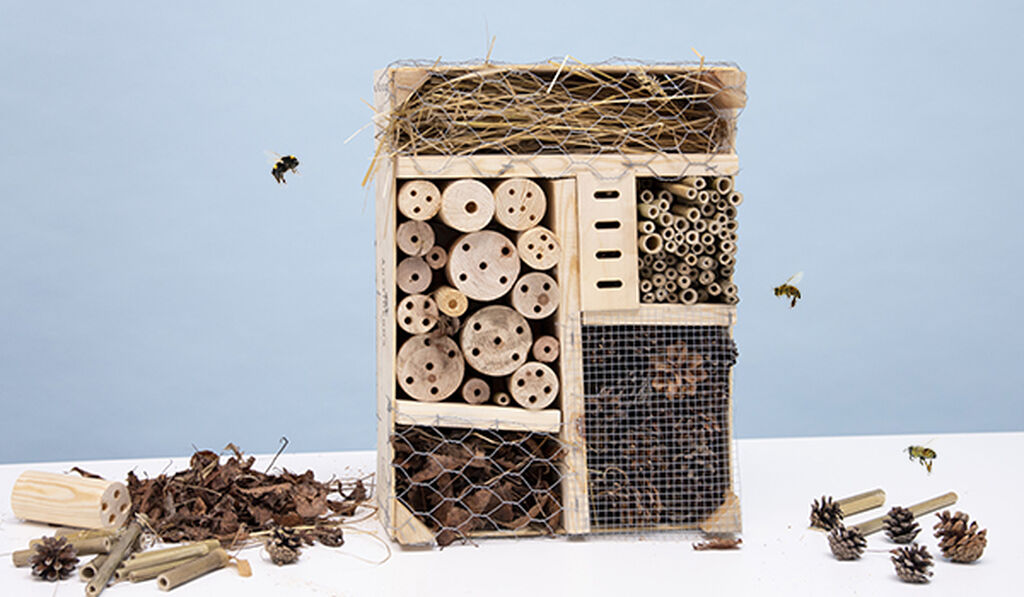
If you want to read more about the Kristineberg project, click here.
Hallunda Gårdspark, Botkyrka
In the Hallunda Gårdspark project in Botkyrka, a new restaurant building is added to the existing farm. Directly adjacent to it, cultivation areas are established to enable the production of food served in the restaurant. An existing orangery is being renovated, and a new greenhouse is added to the original structure.

If you want to read more about the Hallunda Gårdspark project, click here.